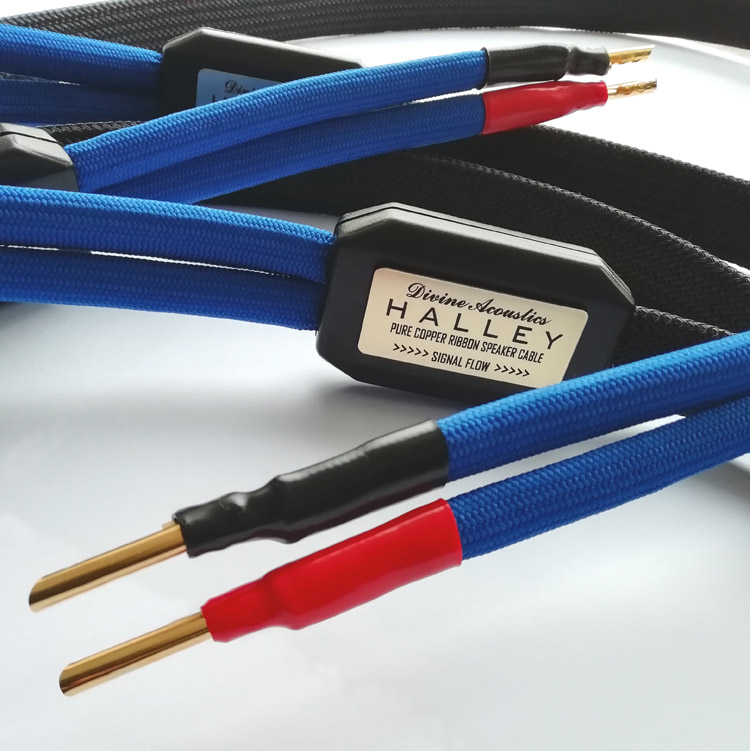
USER MANUAL

Halley speaker cables are designed for low-voltage connections between amplifiers and speakers in stereo systems and home theaters.
CAUTION! Speaker cables are not intended for transmitting power voltage. Never use speaker cables contrary to their intended purpose!
USAGE RECOMMENDATIONS
- Speaker cables should not be stretched or excessively bent.
- The cables should have sufficient length to be laid loosely. They should not be left hanging in the air.
- If the cables are too long, do not coil them into a circle. This may increase the inductance of the cable, resulting in unintended interference with the reproduction quality of high tones.
- Do not immerse the cables in water. This can cause irreversible damage to the internal insulation layers. It is best to clean them by wiping with a damp cloth.
- Halley cables can be laid flat under carpets or rugs. It is possible to step on them without causing any damage.
CONNECTION
CAUTION! All cable connections should be made with the amplifier turned off.
Before turning on the amplifier, make sure that all connections are made correctly and the cables themselves do not show any visible signs of damage.
Halley cables are directional. The direction of signal flow from the amplifier to the speakers is marked on the cable splitters.
Cables are terminated with BFA (hollow banana) plugs, ensuring a secure contact with the amplifier and speaker terminals.
The plug marked in red (positive) should be connected to the terminals in the amplifier and speaker marked with a (+) sign.
The plug marked in black (negative) should be connected to the terminals in the amplifier and speaker marked with a (-) sign.
TECHNICAL SPECIFICATIONS
- Construction: 2-conductor directional speaker cable;
- Conductors: copper tape;
- Dielectrics: multilayer combination of braided cotton and polyester;
- Burn-in time: approximately 100 hours;
- Recommended amplifier power: 2-100W;
- Available standard lengths: 200cm, 250cm, 300cm;
- Available terminations::
- BFA (hollow banana) made of telluric copper plated with gold.
Back to Halley’s description:
